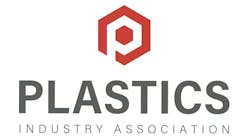By Grant Weller
Sentry Insurance a Mutual Company
There are very few areas across the United States that are immune to the potentially devastating effects of winter, and very few businesses that are immune as well — including your plastics business. As extreme cold, heavy snow and freezing rain happen, roofs, pipes, and power all present serious risks.
With thousands of plastics businesses spread throughout the U.S., and many regions of the country still expecting their snowiest months in February, March and April, now is a great time to evaluate your business’s mid-winter readiness.
And while it’s easy to overlook, winter risks are nothing to take lightly. Damage to buildings, equipment, and inventory can create significant expenses. Interruptions can be financially disastrous. In the instance of a roof collapse, employees, customers and bystanders can be injured or killed.
Related: How to prepare your plastics business for severe weather
To help you stay one step ahead of Mother Nature, I’ve compiled a few mid-winter risks I often see businesses face in my role at Sentry Insurance and paired them with tips to keep your team moving forward.
Take some weight off your roof
Roof collapses from snow are all too common. In addition to roof failures, a collapse could result in damage to your molding or machining equipment. Start by looking for signs of roof leaks before a major snowstorm.
Rooftop warning signs:
- Standing water
- Loose, buckled or damaged flashing
- Vegetation
- Rusting metal pipes or materials
- Debris on roof, drains, or gutter systems
- Damaged, defective or missing joints
Workspace warning signs:
- Water-stained ceiling
- Discolored interior walls
- Deformed walls
- Leakage around windows
- Deteriorating roof structural components
- Mold
Take actions and precautions throughout the year. Talk with a structural engineer or qualified builder to determine a plan that includes the following:
- The snow load your building can withstand
- Repairs to soft spots or roof fixtures
- A snow removal cadence, with instructions for employees to avoid actions that may increase the risk of collapse during snow or ice removal
- Instructions for symmetrical snow removal that avoids redistribution of snow on the roof
- A consultation process before adding more weight to the roof. Think heavier HVAC equipment, new roof coverings or equipment hanging from the interior roof structure
Most importantly, employees shouldn’t go on the roof to remove snow unless they’re equipped with the proper safety and snow removal gear, including fall protection equipment. Snow removal may be best left to a qualified contractor to avoid risk to your employees or damage to the roof during removal.
Keep your pipes flowing
Your plastics business may have designated storage areas or a warehouse where temperatures are cooler than other parts of your facility. Pipes and sprinkler systems in those areas might freeze or burst if ignored throughout winter.
Fortunately, a few simple steps may make all the difference. Speak with a licensed expert to inspect your pipes for leaks or cracks. If you rely on a wet pipe sprinkler system, now is also a good time to speak with a fire sprinkler contractor to confirm whether your anti-freeze system’s concentration levels are high enough.
Other preventive strategies include, but aren’t limited to:
- Adding insulation sleeves to pipes in susceptible areas
- Supplementing poorly heated areas with extra wall insulation
- Using UL-listed heat tape on your pipes
- Installing UL-listed heating cables
During winter months, it’s also important to remind employees where your business’ water shutoff valve is located. Remember, disaster doesn’t wait for you to be ready, so aim to have multiple people during each shift who know where the valve is located.
Don’t go dark
Along with the damage winter storms can do to your facility, snow, ice and freezing temperatures can also wreak havoc on your surrounding power lines. The last thing your business needs is a power outage that leaves equipment unusable, and your building without heat — especially if employees are unable to leave the building during a winter storm. Preparation will be key:
- Have a backup power system installed by a certified contractor. This may be a permanent backup generator system for the entire facility or a portable generator for specific areas of your facility.
- Install surge protectors on all essential plastics production equipment. Damage to plastics production equipment from surges occurs all too often, resulting in significant downtime.
- Notify your local utility company of any trees or low-hanging branches that need trimming near power lines. If a branch breaks due to the weight of snow, your business could face significant downtime.
Each winter scenario I’ve described poses a business interruption risk to your operations. That lost production time can leave negative, lasting impacts on your bottom line.
With a full year of unpredictability ahead, sitting down with your insurer and local experts to make sure you’re prepared for a variety of scenarios — not just your most common risks — can save your business countless dollars and reduce unforeseen challenges this year. Dialogue and proper planning are two of your most powerful tools.
Grant Weller, MS, CSP, ARM is a senior safety consultant for Sentry Insurance, which is headquartered in Stevens Point, Wis. Sentry provides insurance, retirement products, and risk management solutions for businesses, including plastic and rubber goods manufacturers. You can follow more from Grant on LinkedIn.
Related
PLASTICS releases Global Trends report
New CEO named at Kistler Group








